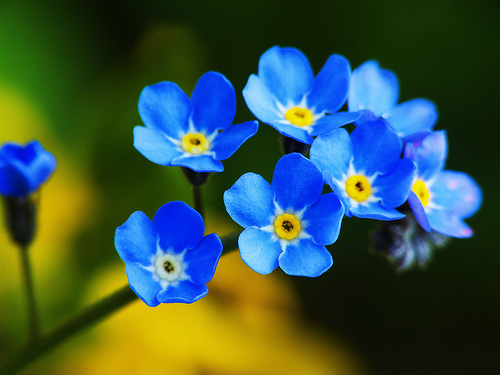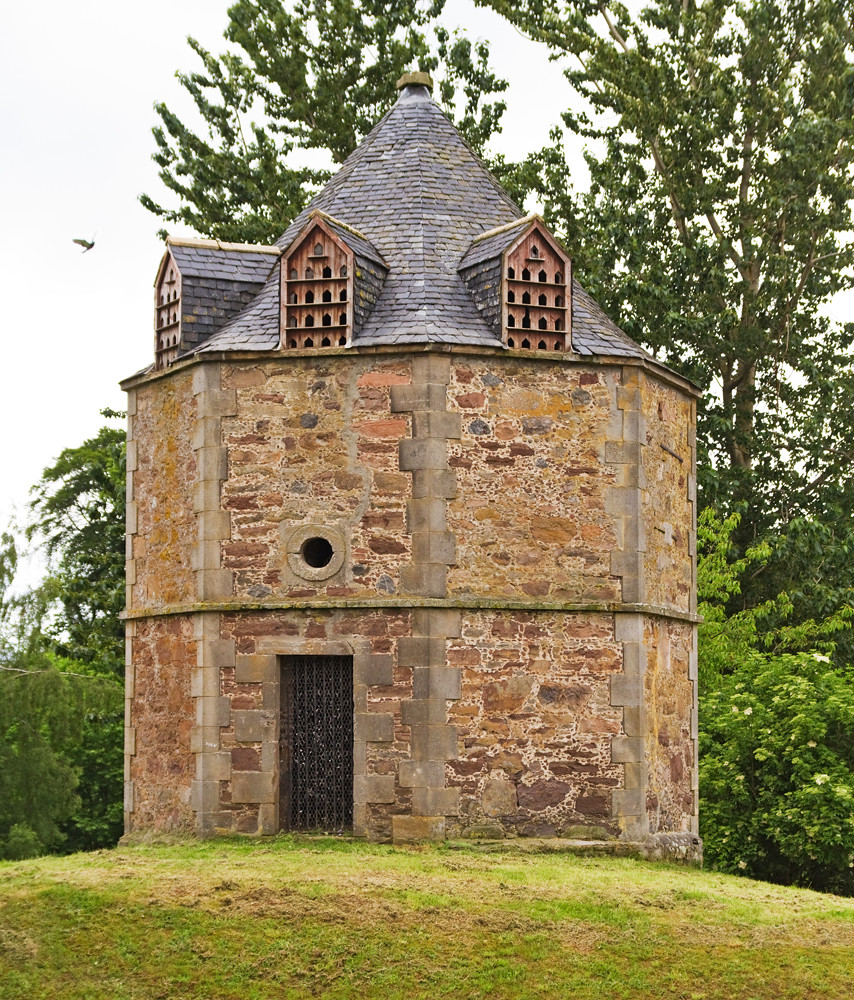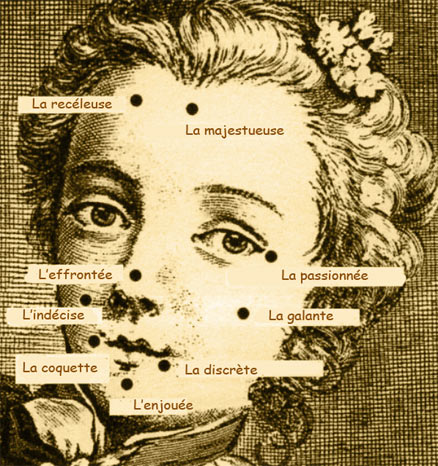Best of the Friday Fun Facts: Collection #1

Here are this week's Friday Fun Facts about Diana Gabaldon's books. This is a collection of some of my favorite items from previous FFF posts.I was far too busy this week to come up with new ones, but I thought many of you might not have seen my earlier FFF posts.All of these were originally posted more than a year ago. Hope you enjoy them!

1) The photo above shows forget-me-nots, like the ones Claire noticed on Craigh na Dun only hours before she went through the stones for the first time.
Casting an eye over the ground, though, I [saw] an interesting plant growing near the base of one of the tall stones. Myosotis? No, probably not; this had orange centers to the deep blue flowers. Intrigued, I started toward it. Frank, with keener hearing than I, leaped to his feet and seized my arm, hurrying me out of the circle a moment before one of the morning's dancers entered from the other side.Do the forget-me-nots have some special significance? When Diana was asked that question on Compuserve in January, 2009, her response was,
(From OUTLANDER by Diana Gabaldon, chapter 2, "Standing Stones". Copyright© 1991 by Diana Gabaldon. All rights reserved.)
Yes, but a) I didn't know what it was when I used it <g>, and b) I can't tell you what it is yet.Grrrrrr!! I really hate it when she does that. <g> We'll just have to wait and see, I guess.
Some people on Compuserve have speculated that Jamie might have planted them, after Claire's death, perhaps, or sometime during their 20 years apart. I really have no idea.But it seems clear that the reason Claire returned to Craigh na Dun that day was to find these flowers. And so, if it hadn't been for the forget-me-nots, Claire might never have gone through the stones in the first place!
I should add, for the record, that I never paid the slightest attention to the forget-me-nots mentioned in OUTLANDER until people started talking about them on Compuserve in 2011.

2) A dovecote, or doocot as they were known in Scotland, is a structure built to house pigeons. The photo above shows the doocot at Culloden. (Photo credit: The Poss on Flickr.)
Why pigeons? According to this site,
Pigeons provided a valuable source of year-round fresh meat and eggs, adding variety to meals in the winter months. Their droppings, which built up in the dovecots, made an excellent fertiliser and were used in the production of gunpowder and in the processes of leather tanning and cloth dyeing. There was also a prevalent belief that pigeons had medicinal properties and they were used in various forms as a cure-all for everything from the plague to baldness.You may recall that Lallybroch had a doocot:
Besides the arbor, there was a small walled garden, blooming with the last of the summer roses. Beyond it was what Jamie referred to as "the doocot"; or so I assumed, from the assorted pigeons that were fluttering in and out of the pierced-work opening at the top of the building.
(From OUTLANDER by Diana Gabaldon, chapter 26, "The Laird's Return". Copyright© 1991 by Diana Gabaldon. All rights reserved.)

Here's what a doocot looks like from the inside. The pigeons would roost in the little cubbyholes. (You can see that this is where the term "pigeonhole" comes from!)
Doocots came in many different shapes and sizes. There's a list of Scottish doocots here if you're interested.
3) Here's a video about fish falling from the sky, just as Lawrence Stern described to Claire in VOYAGER:
"I have seen a great many things which might be described as peculiar. Fish-falls, for instance, where a great many fish--all of the same species, mind you, all the same size--fall suddenly from a clear sky, over dry land. There would appear to be no rational cause for this--and yet, is it therefore suitable to attribute the phenomenon to supernatural interference? On the face of it, does it seem more likely that some celestial intelligence should amuse itself by flinging shoals of fish at us from the sky, or that there is some meteorological phenomenon--a waterspout, a tornado, something of the kind?--that while not visible to us, is still in operation?"I think the phenomenon is fascinating.
(From VOYAGER by Diana Gabaldon, chapter 62 ("Abandawe"). Copyright© 1994 by Diana Gabaldon. All rights reserved.)

4) Remember the star-shaped beauty mark that Phillip Wylie wore in THE FIERY CROSS? These tiny beauty marks -- made of velvet, taffeta, or even leather -- were known as "mouches", after the French word for fly. The diagram above, labeled in French, shows what the location of the mouche was supposed to symbolize.
Here is a similar list in English, for those of you who don't speak French. <g>
middle of forehead = dignified
corner of eye = passionate
middle of cheek = gallant
heart-shaped (left cheek) = engaged
heart-shaped (right cheek) = married
between mouth and chin = silent
on lower lip = discreet
beside the mouth = likes to kiss
on nasolabial fold = playful
on nose = saucy
near lip = flirtatious
Phillip Wylie wore his star-shaped beauty patch in the corner of his mouth, which you can see from the diagram above means he was flirtatious. (As if we couldn't tell that from his behavior!)
[Jamie's] lips pressed tight together, and he didn’t answer. Instead, he extended a forefinger and touched it, very delicately, beside my mouth. He turned his hand over then, and presented me with a small dark object clinging to the tip of his finger--Phillip Wylie’s star-shaped black beauty mark.
“Oh.” I felt a distinct buzzing in my ears. “That. Er...” My head felt light, and small spots--all shaped like black stars--danced before my eyes.
(From THE FIERY CROSS by Diana Gabaldon, chapter 43, "Flirtations". Copyright© 2001 by Diana Gabaldon. All rights reserved.)

You can see more about these beauty patches here.

5) Claire's favorite way of measuring seconds without a watch is to count hippopotami: One hippopotamus, two hippopotamus, and so on.
Eighty-nine hippopotamus, ninety hippopotamus...And just in case you're not familiar with the song by Flanders and Swann that Claire is thinking of, here it is. (Lyrics are here.)
The child was hanging from Lizzie’s body, bloody-blue and shining in the firelight, swaying in the shadow of her thighs like the clapper of a bell--or a body from a gibbet, and I pushed that thought away...
"Should not we take...?” Auntie Monika whispered to me, Rodney clutched to her breast.
One hundred.
“No,” I said. “Don’t touch it--her. Not yet.” Gravity was slowly helping the delivery. Pulling would injure the neck, and if the head were to stick...
One hundred ten hippo--that was a lot of hippopotami, I thought, abstractedly envisaging herds of them marching down to the hollow, there they will wallow, in mud, glooooorious...
“Now,” I said, poised to swab the mouth and nose as they emerged--but Lizzie hadn’t waited for prompting, and with a long deep sigh and an audible pop!, the head delivered all at once, and the baby fell into my hands like a ripe fruit.
(From AN ECHO IN THE BONE by Diana Gabaldon, chapter 11, "Transverse Lie". Copyright© 2009 by Diana Gabaldon. All rights reserved.)
I'm not taking responsibility for any earworms that may result from watching this video; if the song gets stuck in your head, you can blame Diana. (Just kidding! <g>)
I hope you enjoyed these Friday Fun Facts! Look here to see all of my Friday Fun Facts blog posts. And please come back next week for more!







Thanks an greetings from The Netherlands!